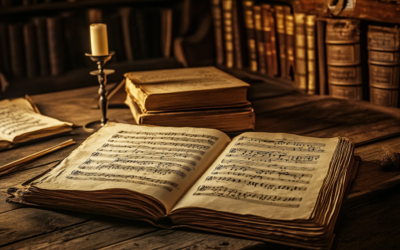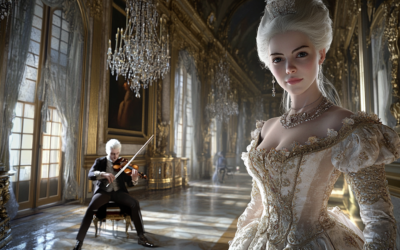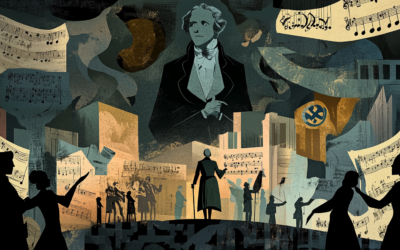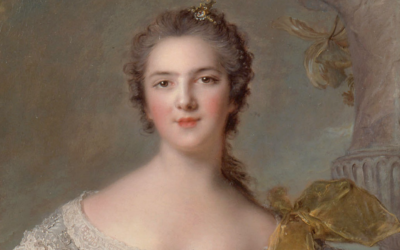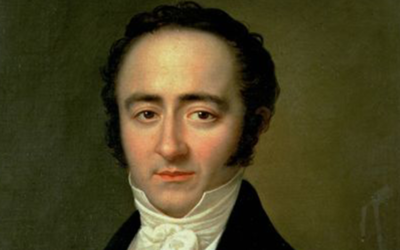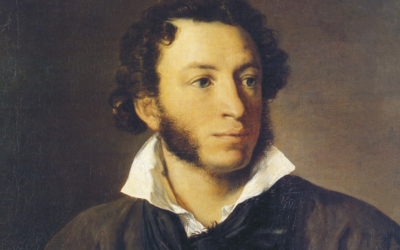The Mysterious Origins of Mozart's K.115
A Question of Authorship and Legacy
The mysterious history of Mozart’s Mass K.115 unveils a story of misattribution, myth, and scholarly conjecture.
Originally believed to be an early work by the young Mozart, K.115 was meticulously cataloged in the mid-19th century as a Missa Brevis. Yet as new evidence surfaced, suspicions grew that this work might actually belong to Mozart’s father, Leopold.
The journey of K.115 serves as a revealing example of how historical embellishments can shape our understanding of a composer’s legacy. From the early theories suggesting Wolfgang composed the Mass during his studies in Bologna to later revelations of striking similarities with Leopold’s compositions, K.115 invites us to reconsider the narratives surrounding Mozart’s so-called “genius.”
This Mass, rather than being a testament to Wolfgang’s early prowess, may instead reflect Leopold’s overlooked influence, exposing the ways in which the young composer’s image was shaped as much by myth as by music.
Mozart in Italy: The Untold Story
Was Mozart truly a solitary genius, or was he merely the instrument of his father’s ambition? “Mozart in Italy” challenges the conventional narrative, revealing a complex dynamic between father and son that shaped the course of music history. Prepare to question everything you thought you knew.
The Mass K.115 stands as a testament to how myth, rather than truth, often shapes the legacy of Mozart's so-called 'genius.'
Mozart: The Fall of the Gods
The tale of Mozart’s Mass K.115 is a complex narrative, marked by scholarly conjecture, editorial embellishment, and questions surrounding its authenticity. Initially cataloged in the mid-19th century, the piece was believed to be a youthful work by Wolfgang Amadeus Mozart, yet later research has cast significant doubt on this attribution. Here, we delve into the fascinating journey of this work and examine the shifting interpretations that surround its origins.
The Discovery and Initial Attribution
The story of K.115 begins in 1856 when music historian Otto Jahn noted a Missa Brevis for four solo voices and organ, complete up to the Sanctus, though only nine measures of the latter survived. Jahn speculated that the piece was composed around the 1770s. Just a few years later, in 1860, Ludwig Köchel, while compiling his now-famous catalog, encountered what he believed was an autograph of the Mass in the hands of publisher August André of Offenbach. Köchel tentatively dated it to the early 1770s, but later confidently assigned it to 1771, listing it as K.115.
This initial attribution was taken at face value for decades. Toward the end of the 19th century, the eminent publishers Breitkopf & Härtel incorporated K.115 into their collection of Mozart’s complete works, the Opera Omnia. They placed it as number 28 in Series 24, even releasing it as a standalone score. Over time, the work was arranged, completed, and even altered in later editions, effectively becoming a puzzle of adaptations and assumptions.
Theories and Hypotheses: Who Really Wrote K.115?
Various scholars proposed different contexts for K.115, each drawing on fragments of information and speculation. Théodore de Wyzewa and Georges de Saint-Foix suggested that Mozart could have composed it during his stay in Bologna in 1770, likely inspired by his lessons with the renowned Padre Martini. In contrast, Ludwig Schiedermair proposed a date in Vienna during the late summer of 1773, while Alfred Einstein believed it to be contemporaneous with the Missa Solemnis K.167, composed in June 1773 in Salzburg.
Einstein viewed K.115 as an “immediate result” of Mozart’s studies with Michael Haydn, Johann Ernst Eberlin, and Anton Cajetan Adlgasser. He assigned it a new position in his 1936 catalog revision (K.3) as K.166d, arguing that Mozart abandoned the composition due to Archbishop Colloredo’s demand for shorter liturgical pieces. Yet, despite these detailed attributions, Einstein’s theories were ultimately inconclusive, and K.6 catalog editors offered a more skeptical view, adding that the Mass could simply be a copy of a work by an unknown composer.
A New Theory Emerges: Leopold’s Shadow
In 1963, a surprising new twist came to light when the Sam Fox Publishing Company in New York released a piano reduction of a Mass in C major by Leopold Mozart. Listed by Max Seiffert in Leopold’s catalog, the piece bore striking similarities to K.115. Karl Pfannhauser, a meticulous researcher, uncovered a plethora of parallels between Leopold’s Mass and K.115, suggesting a different origin story for the work.
Among these striking similarities were 22 identical measures from the Allegro section of the Gratias to the Filius Patris in K.115, as well as the Qui tollis section and the double fugue in Cum Sancto Spiritu. These findings strongly indicate that K.115 is not an original work by Wolfgang but rather an extraction from Leopold’s earlier, grander Mass in C. Written prior to 1764, Leopold’s Mass predates any conceivable composition by an eight-year-old Wolfgang.
Debunking the Myth: The Bologna Connection Unraveled
Pfannhauser’s revelation that K.115 was, in all likelihood, Leopold’s work, challenges the narrative that has surrounded this Mass for over a century. If K.115 is indeed a derivation of Leopold’s earlier composition, it dismantles the notion that the piece reflects young Wolfgang’s musical training under Padre Martini in Bologna. Instead, K.115 serves as yet another reminder of the extent to which later editors and publishers may have projected onto Mozart a precocity unsupported by concrete evidence.
The Legacy of K.115: A Lesson in Musical Mythmaking
The story of K.115 highlights how easily myths take hold in the historical record, especially when they align with the desire to see Mozart as an unparalleled prodigy from an early age. The desire to celebrate Mozart’s genius has led, ironically, to the attribution of another’s work—his own father’s—to the young composer. Today, K.115 stands as a testament to the tangled legacy of attributions and assumptions that have shaped Mozart’s image. It prompts us to question: how much of what we celebrate as Mozart’s “genius” might instead be the result of historical embellishment?
In the end, K.115 is more than just a Mass with questionable authorship—it is a cautionary tale about the allure of myth in shaping music history.
You May Also Like
The Kolb Concerto: A Mozartian Mirage?
The Kolb Concerto’s dubious origin and poor musical quality expose yet another myth in the Mozartian canon. If this is the work of a genius, then perhaps we’ve been fooled for centuries.
The Adélaïde Deception: Mozart’s “Lost” Violin Concerto and the Art of Musical Forgery
In the early 20th century, the “discovery” of Mozart’s sixth violin concerto in Paris created a sensation. Dubbed the Adélaïde Concerto and supposedly written for Madame Adélaïde of France, it was hailed as a testament to Mozart’s genius. However, as the story unfolds, it becomes clear that this masterpiece was not the work of the child prodigy but rather a carefully orchestrated hoax by Marius Casadesus. Despite its unmasking as a forgery, the concerto continues to captivate audiences, raising questions about authenticity and the music industry’s willingness to deceive for profit.
Mozart and the Nationalist Illusion: The 1931 Festival and Its Legacy
The Salzburg Festival, far from being a mere celebration of Mozart’s genius, was born out of nationalist ambitions during a turbulent period in Austro-German history. Conceived by figures like Max Reinhardt, Heinrich Damisch, and Friedrich Gehmacher, the festival was deeply rooted in ultranationalistic ideals, transforming Mozart’s legacy into a tool for cultural dominance. The truth behind its founding has long been obscured, but the primary sources tell a different, darker story.
K.6 and K.7 Sonatas: A Fabricated Genius?
The earliest sonatas of Wolfgang Amadeus Mozart, K.6 and K.7, are traditionally seen as proof of his precocious genius. But as we explore the murky origins of these works, we find that they may be more a product of Leopold Mozart’s ambition than Wolfgang’s musical talent. The truth, as always, lies somewhere between the notes.
Georg Nissen and the Missing Notebooks – Part II
This second part delves deeper into Georg Nissen’s scheme to expose the truth about Mozart’s death, and the roles of Constanze Mozart and her sons in keeping it buried. As new details emerge, the mystery surrounding the famous composer’s final days grows even darker, with powerful forces potentially at play.
Mozart and Salieri
Pushkin does not see Salieri as a mere mediocre. In fact, Salieri embodies the struggle of the artist, much like Michelangelo, who reaches greatness through relentless effort. Pushkin himself identifies with both Mozart and Salieri, but he emphasises that true art demands work, discipline, and sacrifice. In poisoning the Mozartian element within himself, Salieri performs a service to art, freeing it from the frivolity of effortless genius. ‘Can genius and malice coexist?’ Pushkin’s answer is complex, but in the end, Salieri’s act seems to affirm that true creation lies in the hands of those who strive.


